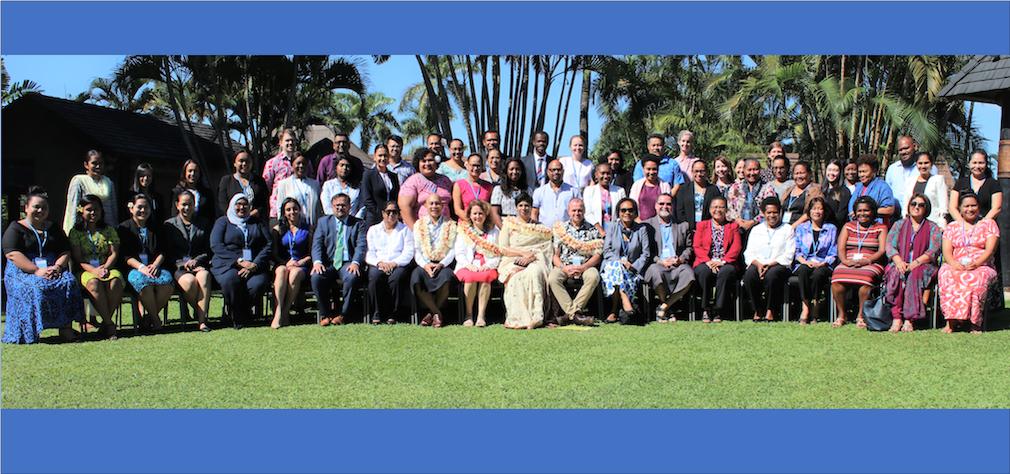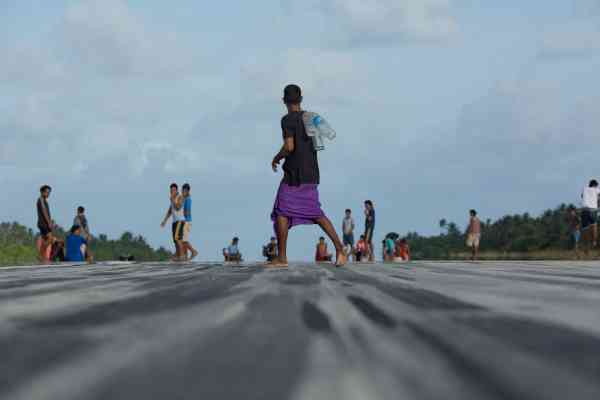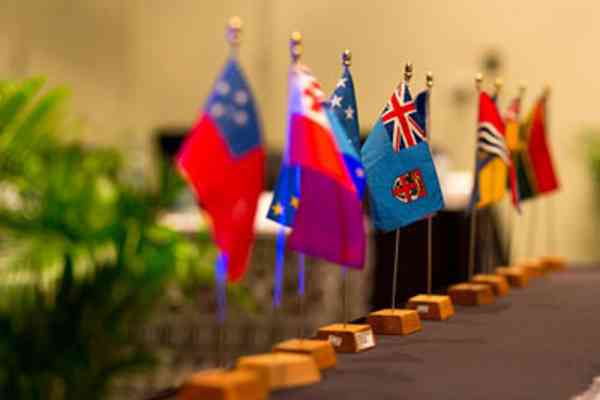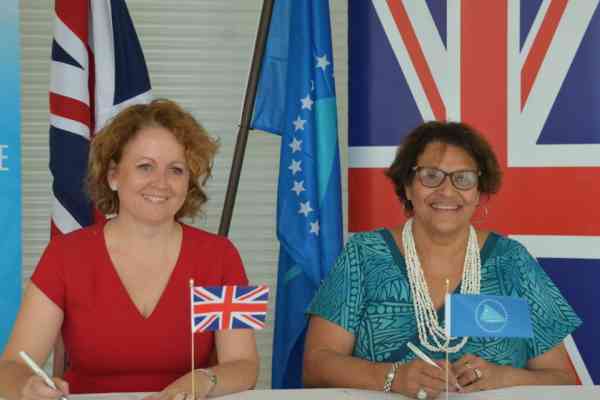Pacific to launch human rights implementation principles at the UN Human Rights Council in July
The Pacific will be launching the ‘Pacific Principles’ on National Mechanisms for Implementation, Reporting and Follow-Up (NMIRFs) at a virtual side event of the 43rd Human Rights Council.
The event will be the conclusion to a process that began back in April 2019 in Nadi, Fiji whereby the Pacific region was the first to be presented with an opportunity to hold a collective forum on NMIRFs.
Around the world, states have increasingly recognised the struggle to effectively implement their human rights commitments and the Sustainable Development Goals (SDGs) due to their sheer volume and the concept of NMIRFs and the role it can play in the implementation agenda has been a subject of discussion internationally for some time.
The launch of the ‘Pacific Principles’ represents a significant achievement for this region in developing a guiding document for NMIRFs towards the effective implementation of human rights and SDGs– a step forwards that is of great global interest and which can be used to inform the establishment of such mechanisms worldwide.
The Implementation Gap and emergence of NMIRFs
Until relatively recently the ‘implementation gap’ remained an unspoken concept. This notion arose from years of international standard-setting efforts that were not met with a similar devotion to understanding how these standards would be put into practice at the national level.
The Pacific Island Countries (PICs) have been particularly affected in terms of implementation, with limited financial and human resources and geographical challenges to overcome. Across the world, an ad hoc approach to implementation was commonplace as was a perceived ‘reporting burden’ arising from this ineffective approach.
According to Fiji’s Permanent Representative to the Human Rights Council in Geneva Her Excellency Nazhat Shameem “States have begun to build a new global implementation agenda. The keystone of this agenda is the evolution of a strong and sustainable State mechanism for implementation, reporting and follow up. Such a mechanism helps to build national resilience, it narrows the implementation gap, it contributes to the prevention of human rights violations and it eases the reporting burden for States".
Out of this context ‘National Mechanisms for Implementation, Reporting and Follow-Up’ organically began to evolve in various countries where the ‘gap’ was recognised. Often known as ‘Human Rights Committees’ or ‘Taskforces’ these bodies are tasked with coordinating and tracking implementation at the domestic level.
The Secretary of the Kiribati Ministry of Justice, Mr Birimaaka Tekanane highlighted “I think when we look at human rights … yes, it’s a challenge for small island States, in particular with limited resources and limited capacity”.
“We established what we call the Kiribati National Human Rights Taskforce and that has become like a working group that tries to progress all these outstanding reports and implement most of the activities,” Mr Tekanane said.
NMIRFs can take a number of different forms from a single government ministry body to a stand-alone government-funded institution. The most common, particularly in the Pacific, is the middle ground of a standing inter-ministerial committee, which also facilitates the participation of civil society, the NHRI, parliamentarians and other implementation actors.
The Chairperson of the Vanuatu National Human Rights Committee Ms Angeline Dovo shared that “For Vanuatu our National Human Rights Committee was established by a Statutory Order made by the Prime Minister under the Government Act in 2014.
“So I see that as a big advantage for Vanuatu because we have a national mechanism that would assist the government to ensure that it implements the provisions of the convention and also to ensure that the government provides reports under each convention as required by the Human Rights Council,” Ms Dovo added.
Nadi Dialogue & the Pacific Process
In April 2019, the Government of Fiji, in partnership with SPC RRRT and Universal Rights Group, hosted the ‘Nadi Dialogue’ bringing together ten PICs, other small island states, Australia and New Zealand to share their implementation challenges and respective responses, including through the establishment of NMIRFs.
Over two days government representatives discussed their experiences out of which a strong sense of solidarity and commonality emerged. The challenges being faced were largely the same – an overwhelming amount of overlapping human rights recommendations and SDG indicators, resource constraints, staff turnover and competing priorities, to name but a few.
During the dialogue, it became clear that from the early days of NMIRF establishment in the Pacific a set of principles of practice had begun to emerge that were proving to be effective in addressing these challenges.
According Ms Peseta Simi, CEO of the Ministry of Foreign and International Trade and Chairperson of Samoa’s Human Rights Taskforce, having the Taskforce helps facilitate Samoa’s government agencies working together to implement outstanding human rights commitments.
“2016 was the second time that we had presented our Universal Periodic Review report to the Human Rights Council. Following that, we came back home and established the Human Rights Task Force,” Ms Simi adds.
“Since then, we have been following this work plan…it really facilitates how we get our lead agencies together in order to be able to assess some of the outstanding things that we need to do. That's why it's important to have the monitoring framework because it also eases the burden.”
At the conclusion of the Nadi Dialogue, the PIC representatives came to a collective agreement that documenting these principles of practice for establishing effective NMIRFs would be a valuable exercise.
The “Pacific Process’ was designed as a consensus-based undertaking to remotely develop an outcome document from the Nadi dialogue. This was to be done through multiple drafting phases involving the PIC representatives ultimately be turned into a set of principles for NMIRFs – the Pacific Principles.
In March 2020 the Pacific Process concluded and the drafting states were invited to confer their endorsement on the document. To date eight of the ten PICs have given their endorsement. The process and subsequent endorsements truly reflect the depth of practical experience and political support the Pacific Principles are founded on.
The Pacific Principles for NMIRFs
The Pacific Principles provide a framework for the establishment and development of NMIRFs that has global utility and are based on an understanding that ‘no one-size-fits-all’. The principles encourage flexibility of application in response to the national context, whilst at the same time identifying common roles, responsibilities and characteristics that are essential for the effectiveness of any national mechanism.
Importantly an NMIRF should be permanent and established by the executive or legislative to move away from the ad hoc approach and be given the necessary structure, mandate and resources to enable the effective coordination and tracking of national implementation of human rights and other overlapping frameworks such as the SDGs and National Development Strategies. The ad hoc approach, so common until recent years, was characterised by national actors (the government ministries, civil society, NHRIs, parliamentarians, private sector, traditional and religious leaders, etc.) operating in silos in their implementation of the obligations and standards.
An NMIRF must provide a regular platform for coordination between these actors, through meetings and the use of emerging technologies such as IMPACT OSS, the NRTD and SIMORE. In doing so this allows a coordinated approach to implementation and monitoring that avoids duplication or gaps, creates efficiencies and facilitates an implementation focused approach, as opposed to an ad hoc approach that can only seek to address the reporting burden. The full Pacific Principles outline the range of tasks an NMIRF should have incorporated into its mandate from the outset.
Beyond the Pacific Process
The launch event on 3 July signifies the end of the process initiated at the end of the Nadi Dialogue but it is only the beginning for the Pacific Principles. Within the region, SPC RRRT is already working with multiple governments to establish and strengthen NMIRFs using the Pacific Principles as the guiding framework.
At the international level, the global interest in the Pacific’s achievements was made clear in the passing of Human Rights Council Resolution A/HRC/42/L.3, which commits funding for the Office of the High Commissioner for Human Rights to undertake five regional dialogues around the world to build on the outcomes of Nadi. The Pacific Principles are a head start for all of these events and represent an opportunity for the document to gain global approval and endorsement. This would strengthen the NMIRF establishment movement by creating a common guiding framework around which national efforts and technical assistance can be framed and peer to peer strengthening can be encouraged. The Principles may be of the Pacific but they are for the world.
For more information on the Pacific Principles, technical assistance requests from RRRT, interest in NMIRF technologies or other questions arising from this article please contact [email protected] or [email protected]



